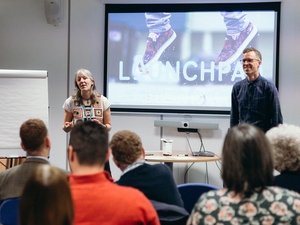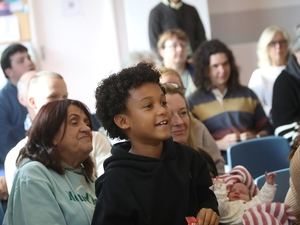Our vision:
A rejuvenating community of Jesus-centred, Kingdom-seeking disciples
Our vision in our diocese is to be a Church with Jesus Christ at the heart of everything we do, a Church in which we seek God’s Kingdom, and where all are enabled to experience a life-transforming encounter with Jesus Christ in order to become disciples.
We have now crystallised that thinking into a phrase that we hope sums up what we aspire to be: a rejuvenating community [one that rejuvenates itself and seeks to rejuvenate others] of Jesus-centred [learners and followers of Jesus, with our actions shaped by him], Kingdom-seeking [including our devotion to God, our passion for social justice, our care for Creation and fellowship with each other] disciples. [we are committed to our faith, and want to keep on becoming more like Jesus]
That vision is supplemented by two further priorities:
- We deliberately prioritise our work with children, young people and young adults, to enable a new generation to grow in faith and find their voice. They are the Church of today. Among the ways in which we will do this is Growing Faith;
- We value and treasure our older people, and ensure they are being care for holistically, by the provision of Anna Chaplaincy to support them in every parish, benefice and cluster across the diocese.
You can hear Bishop Jonathan talk about our vision – and the various strands of our strategy – in the video below.
Our rejuvenating strategy:
Revive, Revitalise and Renew

As a diocesan community, we are invited to take part in the strategy that we pray will guide us towards the vision described above, as we are led by the Holy Spirit. This strategy aims to tackle some of the challenges we know that we face as a diocese: declining attendances, older congregations, expensive buildings, over-stretched staff, and a gap between the costs of our ministry and our income.
So our REJUVENATING strategy aims to place children and young people at the heart of our planning, and also seeks to REVIVE, REVITALISE and RENEW our network of parishes, chaplaincies and church schools. Creating thriving churches with an emphasis on children and young people is a watermark that runs through these parts of our strategy:

REVIVE
We want to revive the spiritual leadership in our diocese, so lay and clergy leaders are vibrant disciples, whose faith is deep and attractive to others, so they can revitalise our parishes. It will involve lay and clergy leaders forming clusters (or Cairns) which can eat, laugh, learn, lament, pray and offer support together, to deepen their faith, develop more effective ministry and lead our revitalisation plans.
Read more about our plans to REVIVE here.

REVITALISE
We want to develop a culture where churches create pathways by which people might become disciples in their local congregations. It may involve encouraging church members to engage with the world, evangelise in words and deeds, establish disciples centred in Jesus, and equip those new disciples for mission. It may also involve specific initiatives, including Choir Church, school chaplains and investment in specific mission projects around the diocese.
Read more about our plans to REVITALISE here.

RENEW
In places where there is little effective gospel presence, we will seek to plant new congregations that are resourced to thrive. So we might plant brand new churches using investment from the national Church, and pilot brand new worshipping communities in schools.
Read more about our plans to RENEW here.
 Strategy brochure
Strategy brochure
You can download a fuller version of our strategy in PDF format here. This may be useful for presenting to PCC members to discuss, as you play your part in our ongoing rejuvenate strategy.
National support
Our strategy was presented to the national Church of England during 2024, with a view to attracting their support. In October 2024, we heard that the Church of England’s Strategic Mission and Ministry Investment (SMMI) Board would be investing around £1m a year for the next five years into these plans, so that we can implement our rejuvenating strategy. The details are here:



